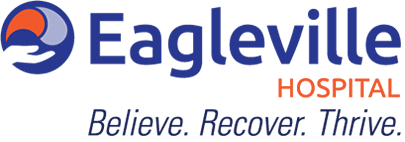Our History
Since its inception over a century ago, Eagleville has remained true to a mission of treating stigmatized diseases that affect all of society, consistently focusing on patients who are underserved.
Throughout the years, belief in this mission has been passed from one generation of board members to the next. In 1909, Eagleville started as the Philadelphia Jewish Sanatorium for Consumptives treating indigent individuals suffering from tuberculosis.
Today, Eagleville is a 305-bed, independent, non-profit addictions and behavioral health treatment and educational organization. Our rich history speaks to and demonstrates a fundamental commitment to remain resilient, adaptable, and resourceful in finding creative ways to address community health problems.
Health Services
The array of health services available at the hospital has evolved over the past century. Over the last 50 years, the evolution has focused on finding and using new and better ways to treat addiction and mental health disorders and on reaching out to special populations to provide this treatment. Highlights by the decades are:
| Decade(s) | Highlights of Our Evolution |
|---|---|
| 1909-1950s |
|
| 1960s |
|
| 1970s |
|
| 1980s |
|
| 1990s |
|
| 2000s |
|
| 2010s |
|
Key Milestones
Over the years, several programs launched at Eagleville which remain active and independent today. To become more accessible to individuals suffering from addiction, the hospital established a halfway house and a day hospital in Norristown, as well as counseling and therapy programs for prisoners at Graterford. The hospital also initiated education programs such as the Montgomery County Community Day School program, which offered an alternative to institutionalization for troubled adolescents. Eagleville was also instrumental in the creation of a performance based master’s degree program in human services offered through Lincoln University. The program accepted students on the basis of proven experience and requisite academic skills.
A couple of programs were begun with Eagleville and are independent today. In 1975, Family House was opened. It is a nationally recognized program that provides residential treatment for recovering alcoholics and drug addicted women and their children. In 1974, Eagleville worked with Montgomery County to create Montgomery County Emergency Services.
In 1969, the first Narcotic Anonymous meeting on the East Coast was held at Eagleville, and it continues to this day.
Today, we partner with Pro-Act and make use of Certified Recovery Specialists (CRS) trained by them.
Advances in Evidence-Based Practices and Technology
We make use of evidence-based practices such as Motivational Interviewing, Thinking For a Change, Interactive Journaling (a Change Companies curriculum), Trauma Informed Care, Transtheoretical Model of Change, and Cognitive Behavioral Therapy. Furthermore, the Parenting and Life Skills classes utilize the Hazelden’s Living Skills Program.
Certified peer specialists have been part of our clinical programs since 2011.
In 2014, we initiated medication-assisted treatments. Patients are assessed for their appropriateness and interest in MAT during the admitting process and throughout their stay. Patients who are enrolled in an MAT program at the time of admission can continue their maintenance here while they are being treated for other substance use.
